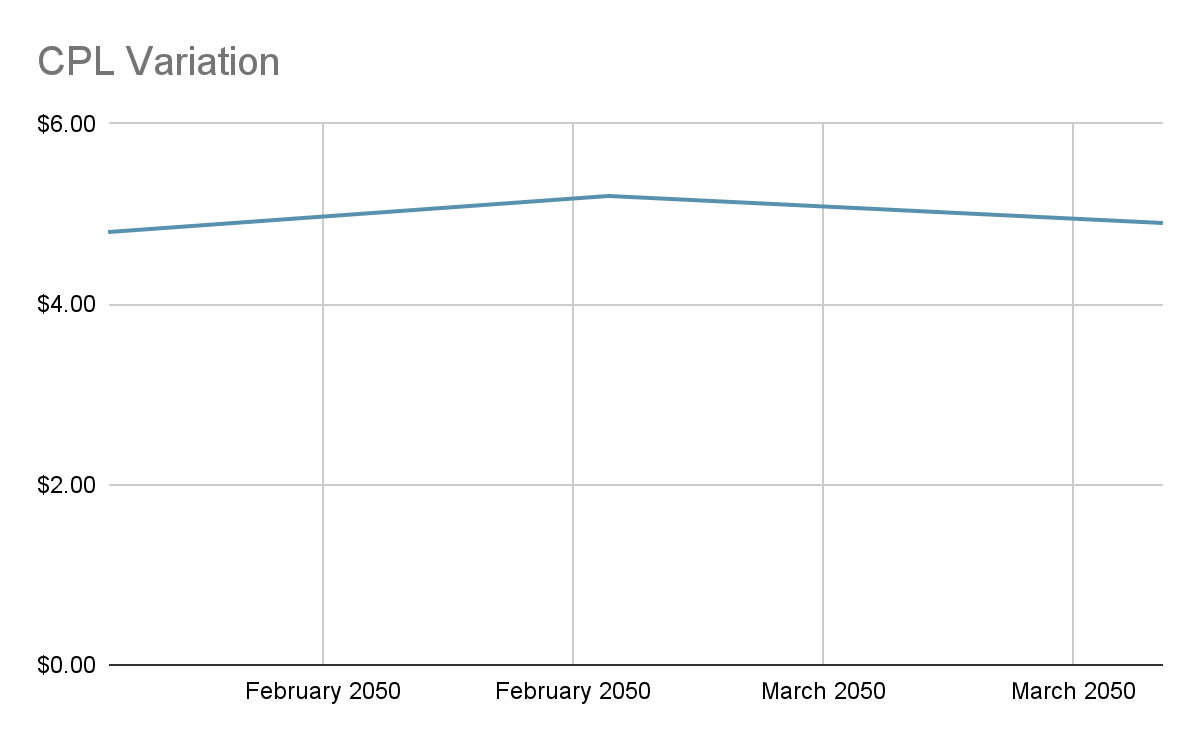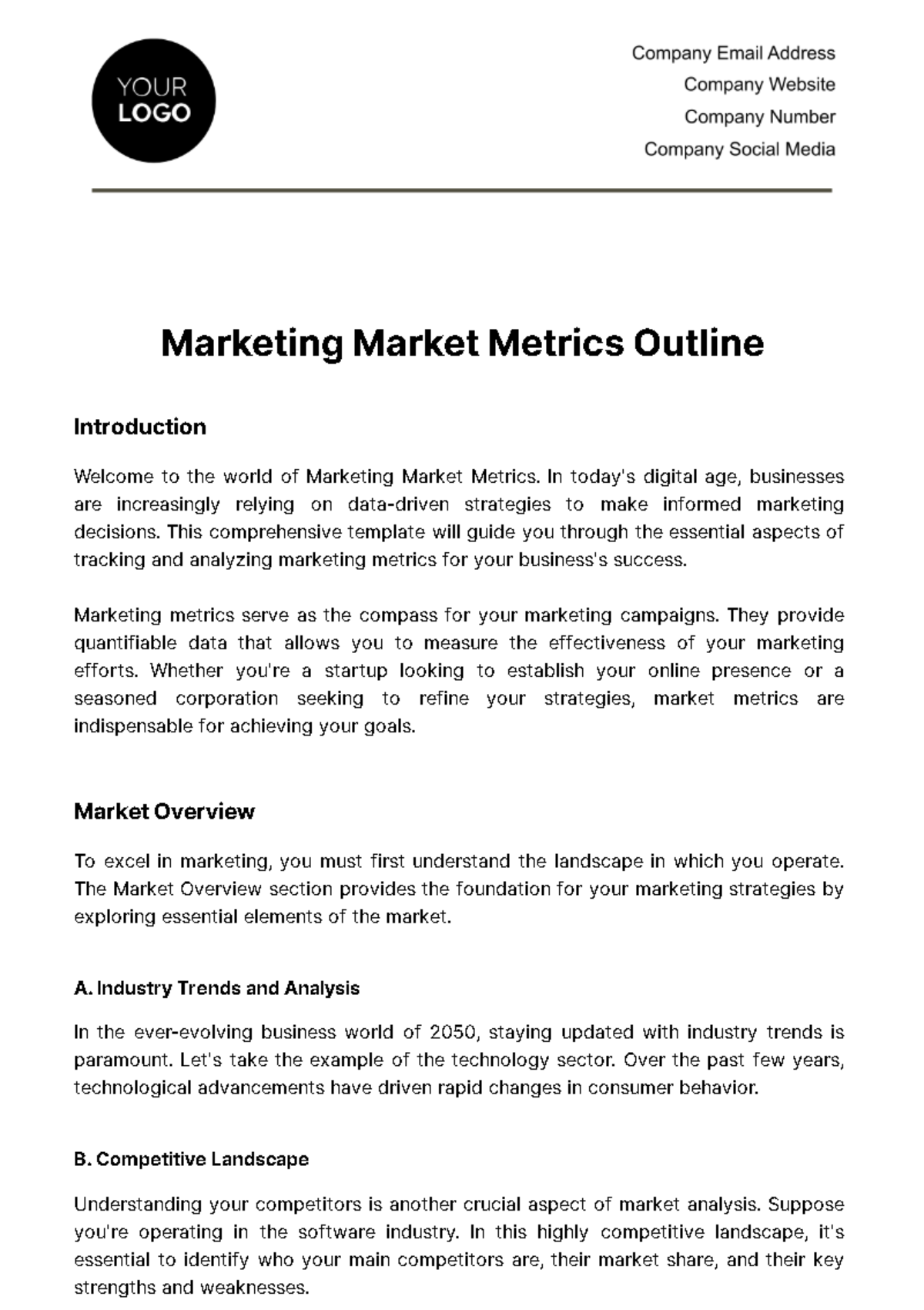Marketing Market Metrics Outline
Introduction
Welcome to the world of Marketing Market Metrics. In today's digital age, businesses are increasingly relying on data-driven strategies to make informed marketing decisions. This comprehensive template will guide you through the essential aspects of tracking and analyzing marketing metrics for your business's success.
Marketing metrics serve as the compass for your marketing campaigns. They provide quantifiable data that allows you to measure the effectiveness of your marketing efforts. Whether you're a startup looking to establish your online presence or a seasoned corporation seeking to refine your strategies, market metrics are indispensable for achieving your goals.
Market Overview
To excel in marketing, you must first understand the landscape in which you operate. The Market Overview section provides the foundation for your marketing strategies by exploring essential elements of the market.
A. Industry Trends and Analysis
In the ever-evolving business world of 2050, staying updated with industry trends is paramount. Let's take the example of the technology sector. Over the past few years, technological advancements have driven rapid changes in consumer behavior.
B. Competitive Landscape
Understanding your competitors is another crucial aspect of market analysis. Suppose you're operating in the software industry. In this highly competitive landscape, it's essential to identify who your main competitors are, their market share, and their key strengths and weaknesses.
C. Target Audience
Your marketing efforts should always be directed towards the right audience. Consider [Your Company Name]'s target audience in 2050. Are you catering to tech-savvy millennials, busy professionals, or a niche market? Understanding your audience's demographics, interests, and pain points is essential for crafting tailored marketing campaigns.
Lead Generation Metrics
Effective lead generation is the cornerstone of any successful marketing strategy. In this section, we'll delve into essential lead generation metrics and provide actual data for the charts.
A. Website Traffic
Website traffic is a fundamental metric that gauges the number of visitors to your site. In 2050, [Your Company Name] experienced significant growth in website traffic. Here's a breakdown of monthly website visitors:

B. Conversion Rate
The conversion rate measures the percentage of website visitors who take a desired action, such as signing up or making a purchase. In January 2050, [Your Company Name] achieved a conversion rate of 3.5%. Over the following months, this rate fluctuated as follows:

C. Cost per Lead (CPL)
Cost per Lead (CPL) calculates the cost incurred for acquiring each lead. In January 2050, the CPL for [Your Company Name] was $5. As we progressed through the year, the CPL experienced variations:
Reporting and Monitoring
Once you've collected and visualized your data, the next step is to create a marketing dashboard and monthly reports for effective reporting and monitoring. These tools help you track the progress of your marketing efforts and make timely adjustments.
A. Marketing Dashboard
A marketing dashboard provides a real-time snapshot of your key metrics. It's a centralized hub where you can monitor data from various sources, such as website traffic, social media engagement, and lead generation metrics.
B. Monthly Marketing Reports
Monthly marketing reports provide a detailed overview of your performance over time. These reports typically include:
Executive Summary: A high-level summary of key findings.
KPI Performance: Detailed metrics on lead generation, customer acquisition, and campaign performance.
Data Visualizations: Charts and graphs to visualize trends and changes.
Recommendations: Suggestions for optimization based on the data.
By regularly generating and reviewing these reports, [Your Company Name] can stay on top of its marketing goals.
In conclusion, effective marketing metrics are pivotal for success in the competitive landscape of 2050. By tracking key performance indicators, utilizing data from diverse sources, and visualizing insights, [Your Company Name] can make informed decisions and optimize marketing strategies.
Stay tuned for the following sections of this template, where we'll delve into actionable insights, budget allocation, and future projections.
[Your Name]
[Your Email]
Marketing Templates @ Template.net






























